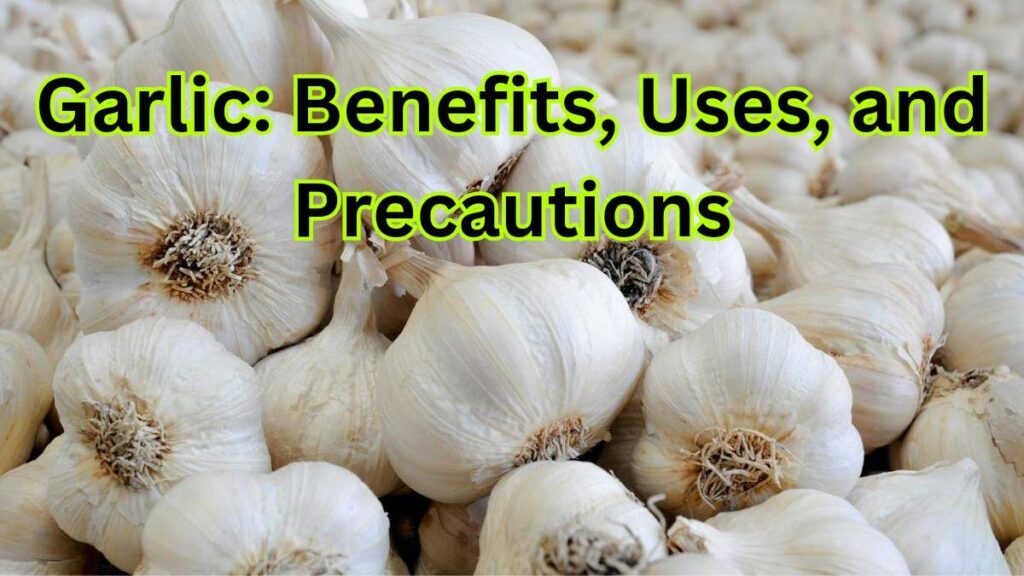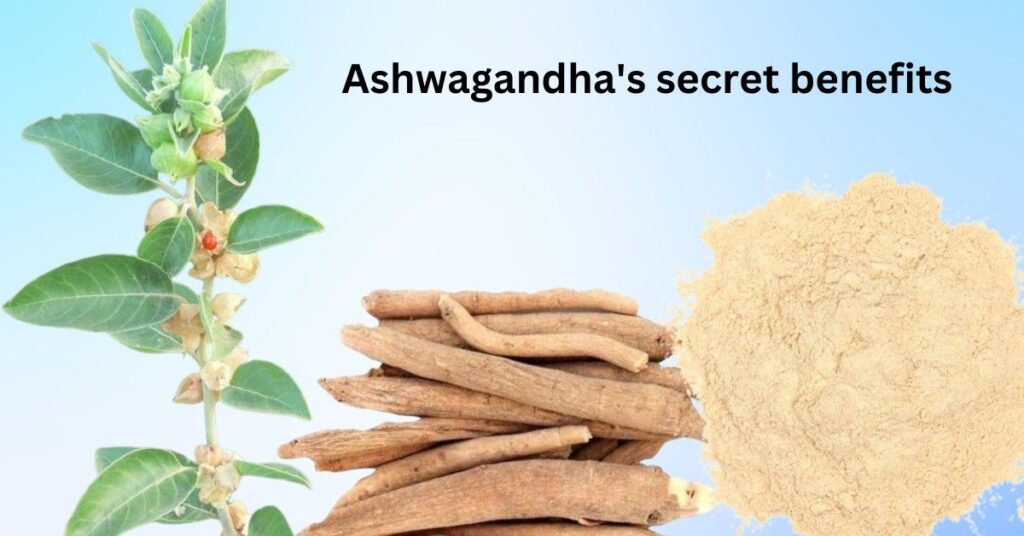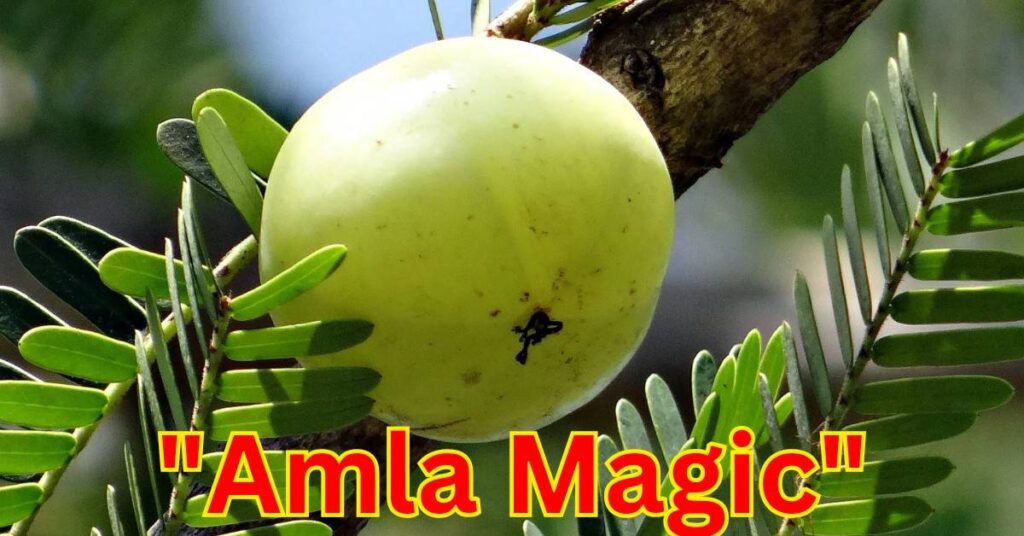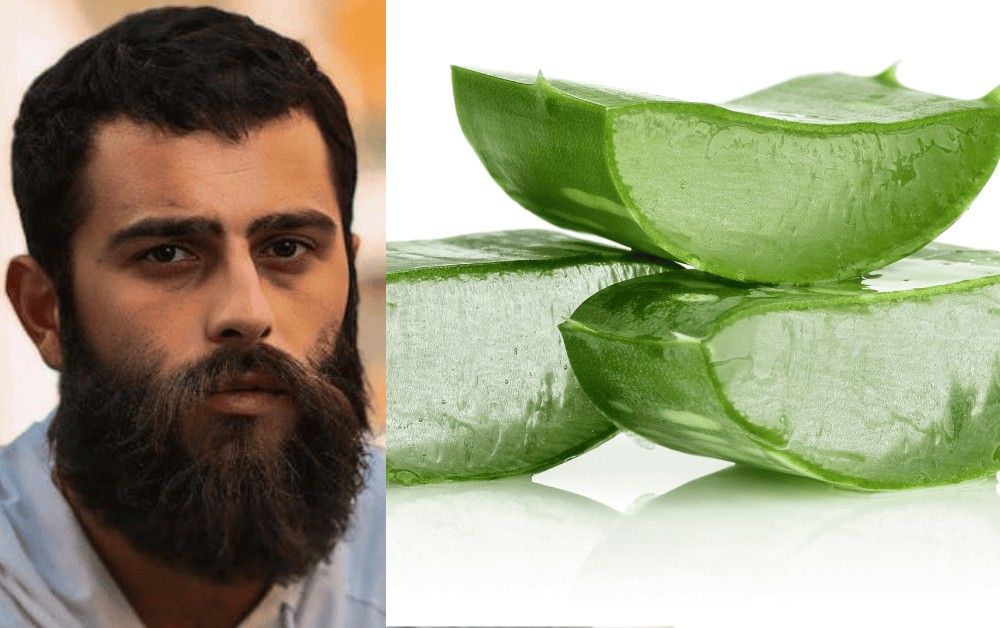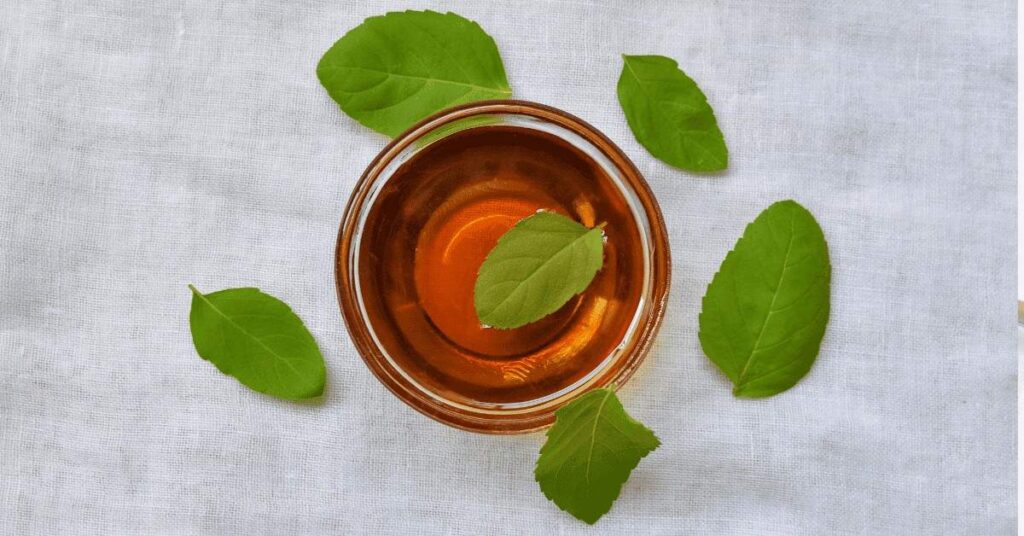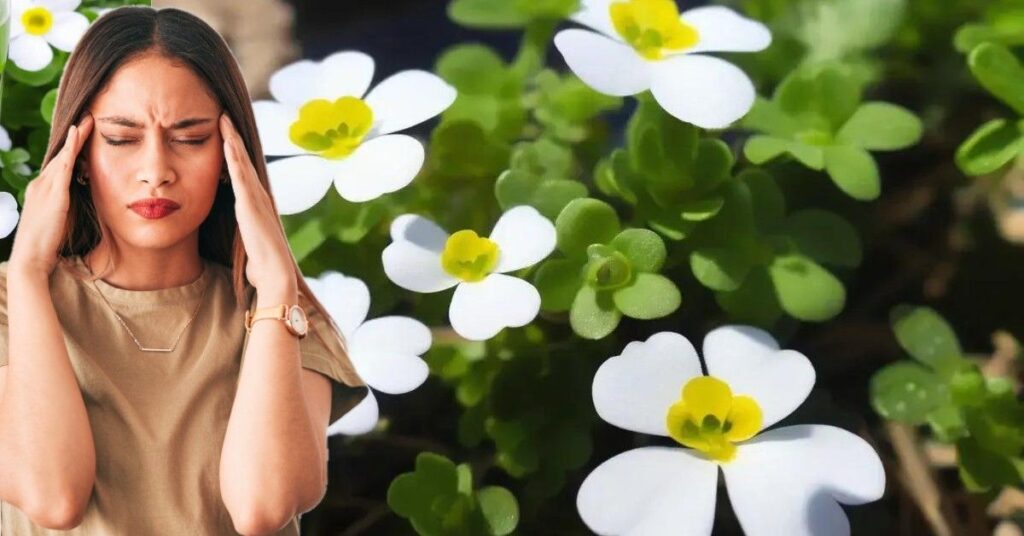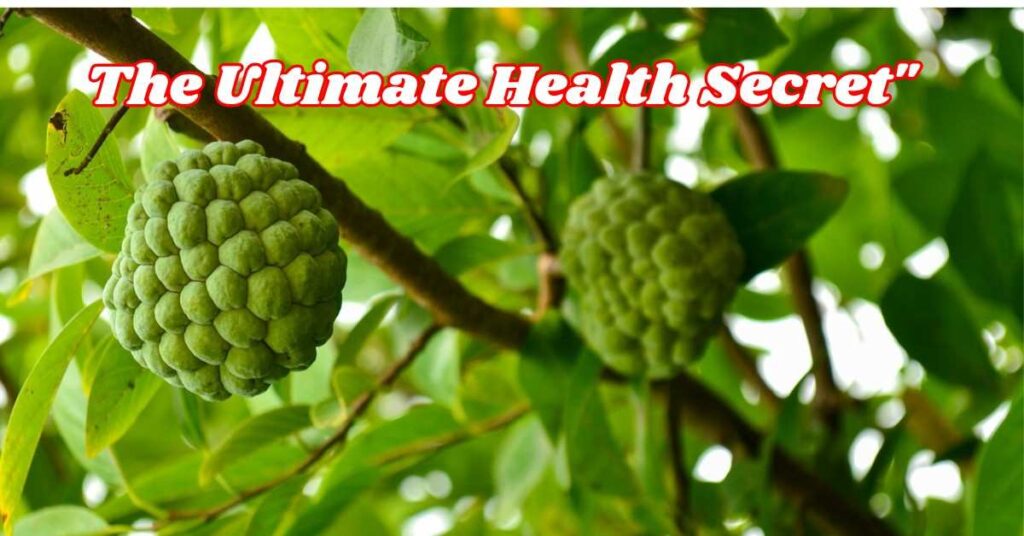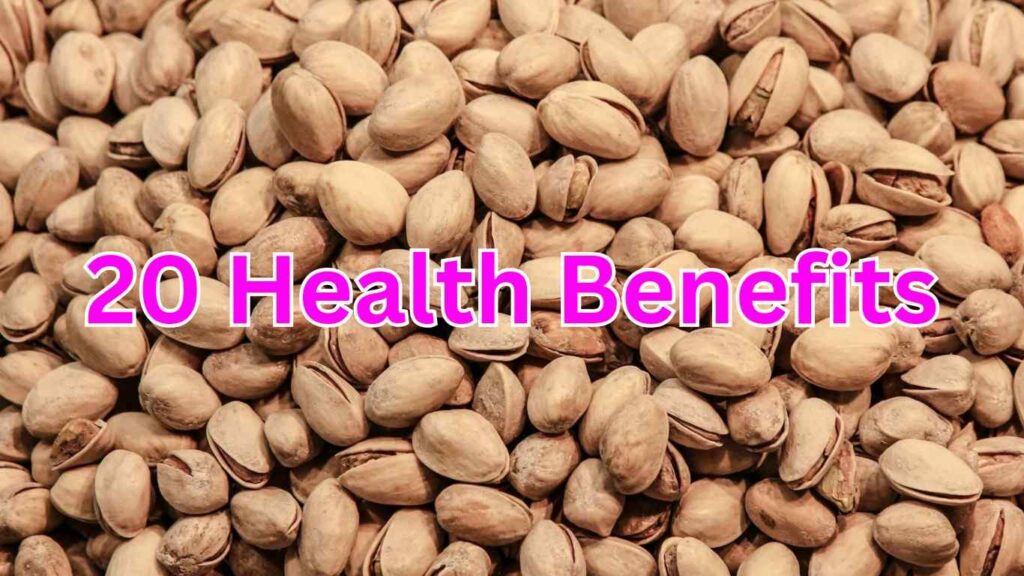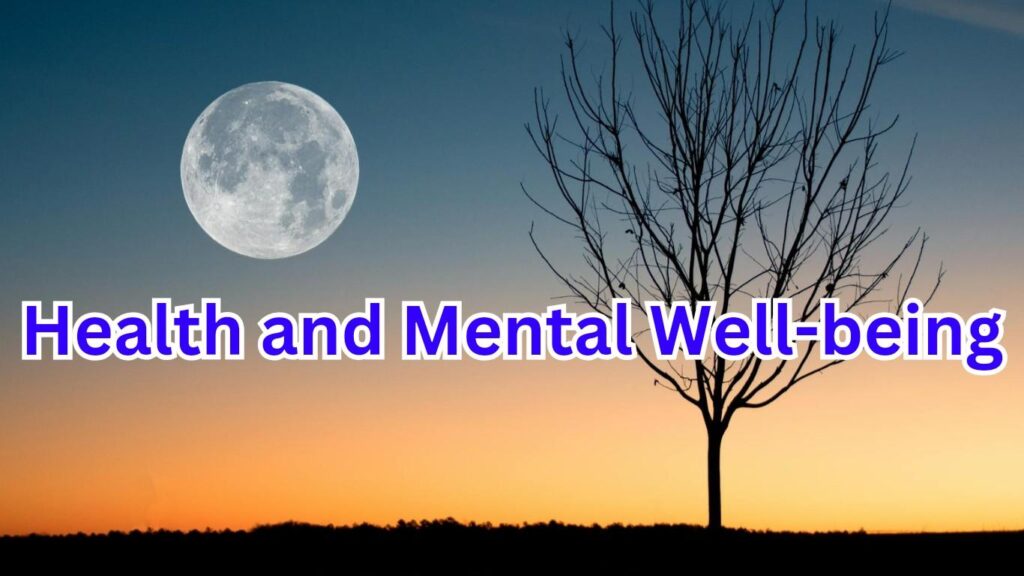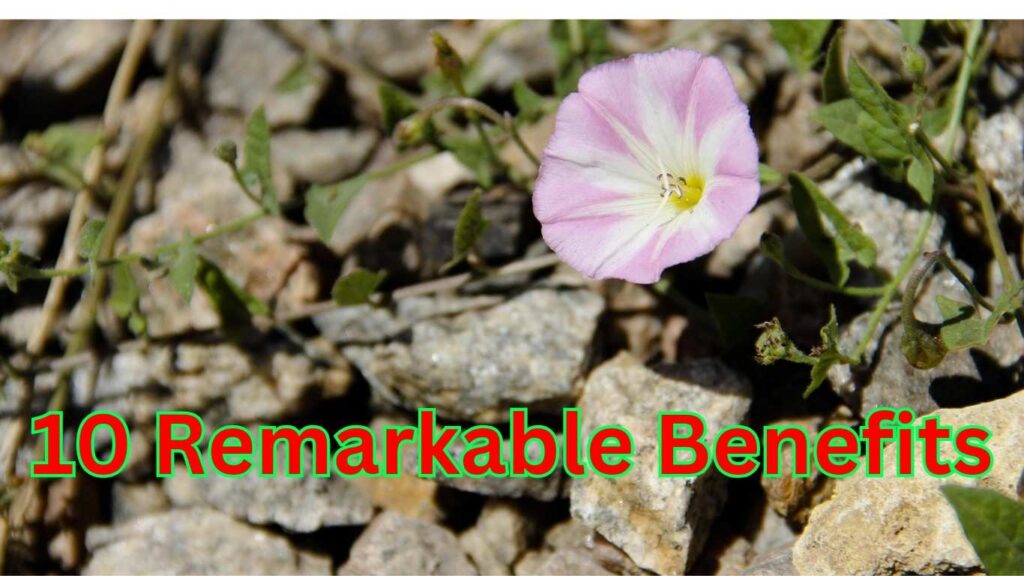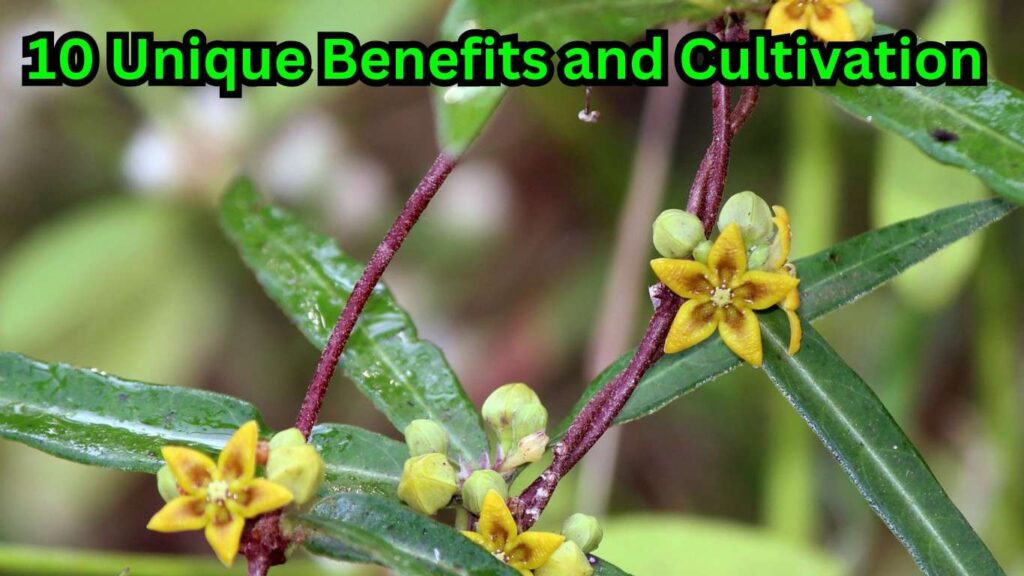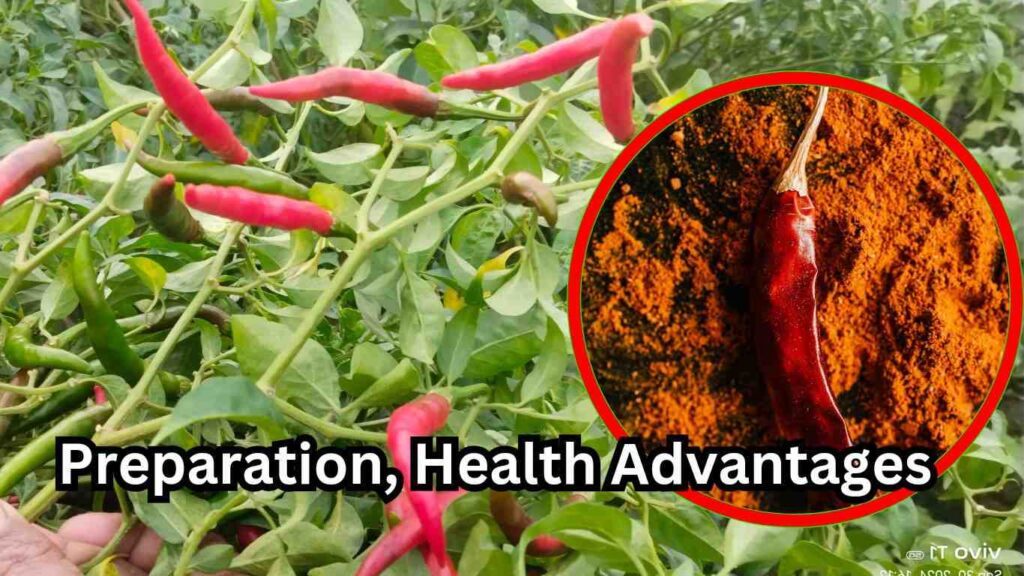Garlic: Benefits, Uses, and Precautions
Introduction
Garlic (Allium sativum) is a staple ingredient in kitchens worldwide. Not only does it add flavor to meals, but it also has a long history of medicinal use. In this article, we’ll explore garlic’s nutritional value, health benefits, effective ways to use it, and its potential side effects.
Garlic: Names Around the World
Garlic is known by different names across the world. In the United States and the United Kingdom, it is called “Garlic.” In Italy, it is referred to as “Aglio,” while in Spain, it is known as “Ajo.” The French call it “Ail,” and in Germany, it is known as “Knoblauch.” In Greece, it is called “Skordo” (Σκόρδο), and in China, it is referred to as “大蒜 (Dàsuàn).” In India, it is called “लहसुन (Lahsun),” and in Russia, it is known as “Чеснок (Chesnok).” The Japanese use the term “にんにく (Ninniku),” while in Brazil, it is called “Alho.” In Mexico, it is also known as “Ajo,” and in Egypt, it is referred to as “ثوم (Thoom).” In Turkey, garlic is called “Sarımsak.”
Nutritional Value of Garlic
Garlic is packed with nutrients that benefit the body. Per 100 grams of garlic contains:
- Calories: 149
- Carbohydrates: 33 grams
- Protein: 6.36 grams
- Vitamin C: 31.2 mg
- Minerals: High levels of manganese and selenium.
- Allicin: A sulfur compound responsible for garlic’s health benefits.
Nutritional Value of Garlic (per 100 grams)
| Nutrient | Amount (per 100g) | Daily Value (%DV) |
|---|---|---|
| Calories | 149 kcal | 7% |
| Protein | 6.36 g | 13% |
| Total Fat | 0.5 g | 1% |
| Carbohydrates | 33.06 g | 11% |
| Dietary Fiber | 2.1 g | 8% |
| Sugars | 1 g | – |
| Vitamin C | 31.2 mg | 52% |
| Vitamin B6 | 1.235 mg | 95% |
| Calcium | 181 mg | 18% |
| Iron | 1.7 mg | 9% |
| Magnesium | 25 mg | 6% |
| Phosphorus | 153 mg | 15% |
| Potassium | 401 mg | 11% |
| Sodium | 17 mg | 1% |
| Zinc | 1.16 mg | 8% |
| Manganese | 1.672 mg | 73% |
| Selenium | 14.2 mcg | 26% |
Note: The values are approximate and based on raw garlic. Percent Daily Values (%DV) are based on a 2,000-calorie diet. Your daily values may vary depending on your calorie needs.
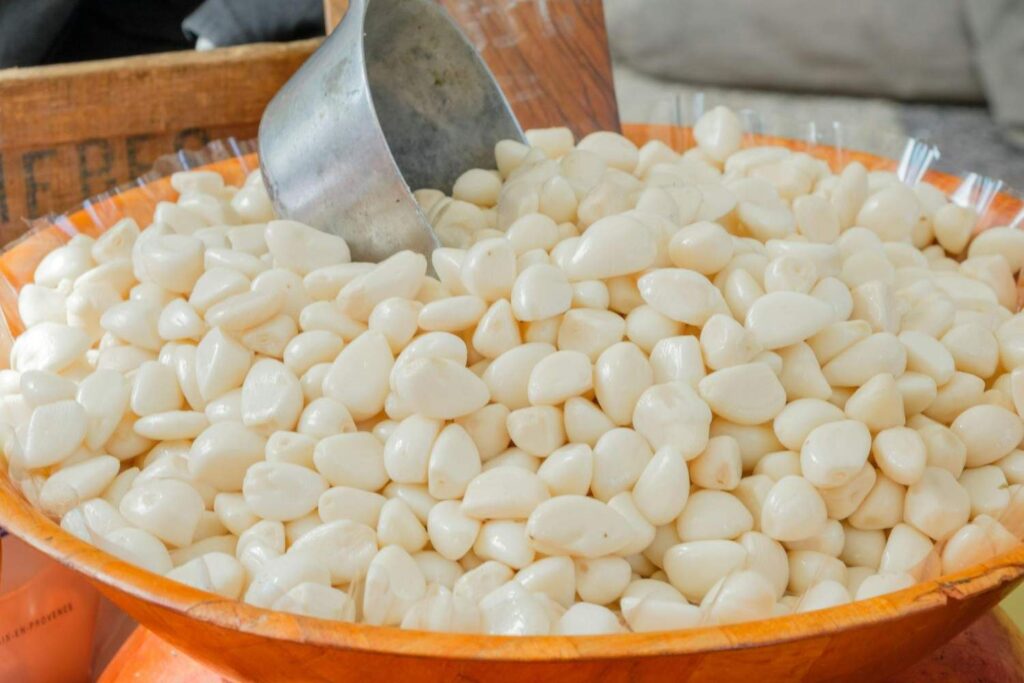
Health Benefits of Garlic
1. Promotes Heart Health
Garlic helps lower cholesterol levels and prevents plaque buildup in arteries. Regular consumption reduces the risk of heart diseases.
2. Boosts Immunity
Garlic’s antibacterial and antiviral properties strengthen the immune system, protecting against common infections like colds and flu.
3. Regulates Blood Pressure
Garlic helps relax blood vessels, reducing high blood pressure naturally. Consuming 2–3 cloves of raw garlic daily can make a difference.
4. Helps Manage Diabetes
Garlic lowers blood sugar levels and improves insulin sensitivity, making it beneficial for people with diabetes.
5. Aids in Weight Loss
Garlic boosts metabolism, reduces fat storage, and helps in managing weight effectively.
6. Benefits Skin and Hair
Garlic oil is effective for acne treatment and promotes hair growth by improving scalp health.
7. Detoxifies the Body
Garlic eliminates toxins from the body and supports liver function.
Ways to Use Garlic (Dosage)
1. Eating Raw Garlic
- Eating 1–2 cloves of raw garlic on an empty stomach can improve overall health.
- Chewing garlic activates its allicin content, making it more effective.
2. Using Garlic in Cooking
- Garlic adds flavor and nutrients to meals.
- To preserve its benefits, avoid cooking garlic at high temperatures for long durations.
3. Making Garlic Oil
- Crush fresh garlic and simmer it in oil to prepare a natural remedy for skin and hair care.
Potential Side Effects of Garlic
While garlic is generally safe, excessive consumption may cause:
- Stomach discomfort, heartburn, or diarrhea.
- Increased risk of bleeding for people taking blood-thinning medications.
- Unpleasant body or breath odor after consumption.
How to Store Garlic
- Store garlic in a cool, dry place with good air circulation.
- For long-term storage, mince garlic and mix it with oil before refrigerating.
Garlic Cultivation
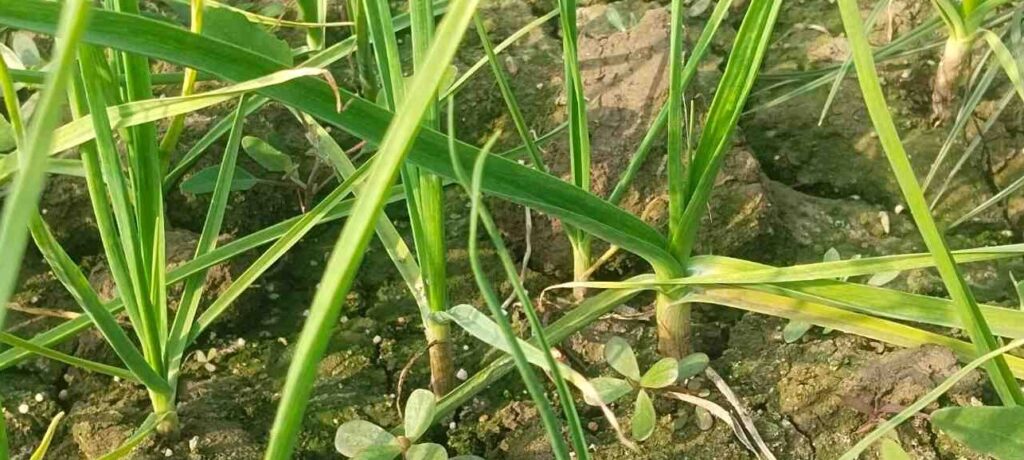
Garlic is a winter crop, and its cultivation requires proper timing for optimal yield. Below is the recommended schedule for growing garlic:
- Planting Time:
Garlic is typically planted between October and November. Early planting in the cool season ensures better growth as garlic thrives in cold weather. - Harvesting Time:
Garlic is ready for harvest 5–6 months after planting. Usually, it is harvested between March and April, when the leaves start turning yellow and dry out.
Key Points to Note:
- In extremely cold regions, planting time can be moved earlier.
- High heat and humidity may reduce yield, so cultivating garlic in cool and dry seasons is ideal.
Common Questions About Garlic (FAQs)
1. How much garlic should you eat daily?
1–2 raw cloves of garlic per day is sufficient for most people.
2. When is the best time to eat garlic?
The best time is in the morning, on an empty stomach.
3. How can you remove garlic odor?
Drinking milk or chewing parsley or lemon slices can help reduce garlic odor.
4. How to Roast Garlic
Roasting garlic is simple and enhances its flavor. Preheat the oven to 400°F (200°C). Slice the top off a garlic bulb, drizzle olive oil, and wrap it in foil. Bake for 30–40 minutes until soft and caramelized. Once cooled, squeeze the roasted garlic out of the cloves.
5. Can Dogs Eat Garlic?
Garlic is toxic to dogs in significant quantities. It can cause gastrointestinal upset and damage red blood cells, leading to anemia. Avoid feeding garlic to your pets, and consult a veterinarian if ingestion occurs.
6. Can Dogs Have Garlic?
Even small amounts of garlic can be harmful to dogs. It’s best to keep garlic out of their diet entirely. There are safer alternatives to enhance their meals, like certain herbs or safe vegetables.
7. How to Mince Garlic
Peel the garlic clove, place it on a cutting board, and smash it lightly with the flat side of a knife. Chop finely or continue cutting until the desired mince is achieved. Alternatively, use a garlic press for convenience.
8. Is Garlic Bad for Dogs?
Yes, garlic is bad for dogs. It contains compounds like thiosulfate that are toxic to them. Even small amounts over time can cause harm. Always opt for dog-safe treats instead.
9. How to Make Garlic Butter
Soften unsalted butter, mix it with minced garlic, and add optional herbs like parsley or chives. Blend well and store in an airtight container. Use it for garlic bread, cooking, or as a spread.
10. How to Grow Garlic
Plant garlic cloves in well-drained soil with the pointed side up, about 2 inches deep, and 6 inches apart. Water regularly and ensure plenty of sunlight. Harvest when the leaves turn brown and dry.
11. When to Harvest Garlic
Garlic is ready for harvest when its leaves turn yellow or brown, typically 7–9 months after planting. Dig carefully with a spade or fork to avoid damaging the bulbs.
12. How to Plant Garlic
Plant garlic in fall or early spring. Break a bulb into cloves, plant each clove 2 inches deep, and space them 6 inches apart. Cover with soil and mulch to protect during cold months.
13. What Is a Clove of Garlic?
A clove of garlic is a single segment of the larger bulb, enclosed in a papery skin. It’s the individual piece you separate when using garlic in cooking.
14. Is Garlic Good for You?
Yes, garlic is packed with health benefits. It supports heart health, boosts immunity, regulates blood pressure, and acts as an anti-inflammatory and antibacterial agent.
15. How to Store Garlic
Store garlic in a cool, dry, and well-ventilated place. Avoid refrigerating whole bulbs. For longer storage, mince garlic and store it in oil in the refrigerator for up to a week.
16. How Much Minced Garlic Equals a Clove?
One medium garlic clove equals about 1 teaspoon of minced garlic. Adjust accordingly depending on your recipe.
17. How Long Does Garlic Last?
Whole garlic bulbs can last for several months in a dry, cool environment. Once broken into cloves, they typically last 1–2 weeks.
18. Is Garlic a Vegetable?
Garlic is classified as a vegetable because it is the bulb of the Allium plant. However, it’s often used as a seasoning in cooking rather than a primary vegetable.
19. How to Peel Garlic
Place a clove on a cutting board, lightly smash it with the flat side of a knife to loosen the skin, and then peel it off. For multiple cloves, shake them in a jar to remove the skins easily.
20. When to Plant Garlic
Plant garlic in the fall, 4–6 weeks before the ground freezes. This allows the roots to establish before winter, resulting in better growth in spring.
21. How to Roast Garlic in the Oven
Cut off the top of a garlic bulb, drizzle it with olive oil, and wrap it in foil. Roast in the oven at 400°F (200°C) for 30–40 minutes until soft and golden.
22. How Much Garlic Powder Equals One Clove?
One garlic clove is roughly equivalent to 1/4 teaspoon of garlic powder. Adjust the quantity based on your recipe’s flavor requirements.

Conclusion
Garlic is a natural powerhouse of nutrients and health benefits. Incorporating garlic into your daily diet can improve immunity, support heart health, and enhance overall well-being. However, moderation is key to avoiding potential side effects.
Research on Garlic
Several studies have demonstrated that the compound allicin in garlic provides significant health benefits. It helps lower blood pressure, regulate cholesterol levels, and boost immunity. Regular consumption of garlic may reduce the risks of heart disease and certain types of cancer.
References
- Garlic’s Medicinal Properties – PubMed
- Nutritional Composition and Health Benefits of Garlic – ScienceDirect
- Antioxidant Properties of Garlic – National Library of Medicine
- Historical Use of Garlic in Medicine – Wikipedia

